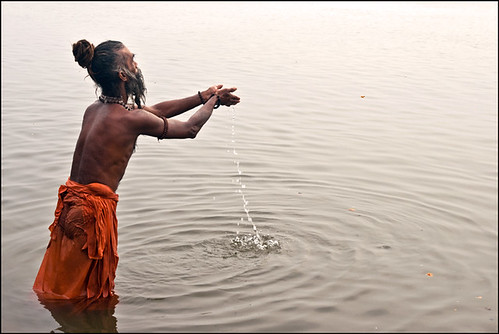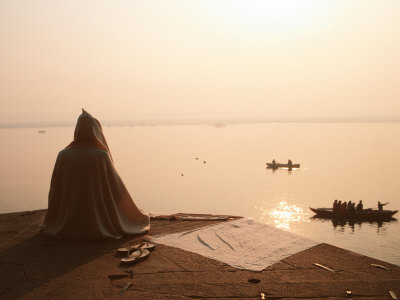The International College of Applied Kinesiology USA reserves the practice of applied kinesiology (AK) to those licensed as primary care doctors who have completed proficiency training in applied kinesiology.
The PAK® logo represents Professional Applied Kinesiology™ and is reserved for ICAK-USA doctors that have met specific requirements to qualify as a professional applied kinesiologist. The individual must be re certified every five years.
Chiropractic Health Center and Dr. Scott Cuthbert supports the use of AK by those certified as PAK® proficient.
Applied Kinesiology
Status Statement
Status Statement
International College of Applied Kinesiology® - USA
The International College of Applied Kinesiology-U.S.A. provides a clinical and academic arena for investigating, substantiating, and propagating AK findings and concepts pertinent to the relationships between structural, chemical, and mental factors in health and disease and the relationship between structural faults and the disruption of homeostasis exhibited in functional illness.
AK is an interdisciplinary approach to health care which draws together the core elements of the complementary therapies, creating a more unified approach to the diagnosis and treatment of functional illness. AK uses functional assessment measures such as posture and gait analysis, manual muscle testing as functional neurologic evaluation, range of motion, static palpation, and motion analysis. These assessments are used in conjunction with standard methods of diagnosis, such as clinical history, physical examination findings, laboratory tests, and instrumentation to develop a clinical impression of the unique physiologic condition of each patient, including an impression of the patient's functional physiologic status. When appropriate, this clinical impression is used as a guide to the application of conservative physiologic therapeutics.
The practice of applied kinesiology requires that it be used in conjunction with other standard diagnostic methods by professionals trained in clinical diagnosis. As such, the use of applied kinesiology or its component assessment procedures is appropriate only to individuals licensed to perform those procedures.
The origin of contemporary applied kinesiology is traced to 1964 when George G. Goodheart, Jr., D.C., first observed that in the absence of congenital or pathologic anomaly, postural distortion is often associated with muscles that fail to meet the demands of muscle tests designed to maximally isolate specific muscles. He observed that tender nodules were frequently palpable within the origin and/or insertion of the tested muscle. Digital manipulation of these areas of apparent muscle dysfunction improved both postural balance and the outcome of manual muscle tests. Goodheart and others have since observed that many conservative treatment methods improve neuromuscular function as perceived by manual muscle testing. These treatment methods have become the fundamental applied kinesiology approach to therapy. Included in the AK approach are specific Joint manipulation or mobilization, various myofascial therapies, cranial techniques, meridian therapy, clinical nutrition, dietary management, and various reflex procedures. With expanding investigation there has been continued amplification and modification of the treatment procedures. Although many treatment techniques incorporated into applied kinesiology were pre-existing, many new methods have been developed within the discipline itself.
Often the indication of dysfunction is the failure of a muscle to perform properly during the manual muscle test. This may be due to improper facilitation or neuromuscular inhibition. In theory some of the proposed etiologies for the muscle dysfunction are as follows:
· Myofascial dysfunction (micro avulsion and proprioceptive dysfunction)
· Peripheral nerve entrapment
· Spinal segmental facilitation and deafferentation
· Neurologic disorganization
· Viscerosomatic relationships (aberrant autonomic reflexes)
· Nutritional inadequacy
· Toxic chemical influences
· Dysfunction in the production and circulation of cerebrospinal fluid
· Adverse mechanical tension in the meningeal membranes
· Meridian system imbalance
· Lymphatic and vascular impairment
On the basis of response to therapy, it appears that in some of these conditions the primary neuromuscular dysfunction is due to deafferentation, the loss of normal sensory stimulation of neurons due to functional interruption of afferent receptors. It may occur under many circumstances, but is best understood by the concept that with abnormal joint function (subluxation or fixation) the aberrant movement causes improper stimulation of the local joint and muscle receptors. This changes the transmission from these receptors through the peripheral nerves to the spinal cord, brainstem, cerebellum, cortex, and then to the effectors from their normally-expected stimulation. Symptoms of deafferentation arise from numerous levels such as motor, sensory, autonomic, and consciousness, or from anywhere throughout the neuraxis.
Applied kinesiology interactive assessment procedures represent a form of functional biomechanical and functional neurologic evaluation. The term "functional biomechanics" refers to the clinical assessment of posture, organized motion such as in gait, and ranges of motion. Muscle testing readily enters into the assessment of postural distortion, gait impairment, and altered range of motion. During a functional neurologic evaluation, muscle tests are used to monitor the physiologic response to a physical, chemical, or mental stimulus. The observed response is correlated with clinical history and physical exam findings and, as indicated, with laboratory tests and any other appropriate standard diagnostic methods. Applied kinesiology procedures are not intended to be used as a single method of diagnosis. Applied kinesiology examination should enhance standard diagnosis, not replace it.
In clinical practice the following stimuli are among those which have been observed to alter the outcome of a manual muscle test:
· Transient directional force applied to the spine, pelvis, cranium, and extremities
· Stretching muscle, joint, ligament, and tendon
· The patient's digital contact over the skin of a suspect area of dysfunction termed therapy localization
· Repetitive contraction of muscle or motion of a joint
· Stimulation of the olfactory receptors by fumes of a chemical substance
· Gustatory stimulation, usually by nutritional material
· A phase of diaphragmatic respiration
· The patient's mental visualization of an emotional, motor, or sensory Stresser activity
· Response to other sensory stimuli such as touch, nociceptor, hot, cold, visual, auditory, and vestibular afferentation
Manual muscle tests evaluate the ability of the nervous system to adapt the muscle to meet the changing pressure of the examiner's test. This requires that the examiner be trained in the anatomy, physiology, and neurology of muscle function. The action of the muscle being tested, as well as the role of synergistic muscles, must be understood. Manual muscle testing is both a science and an art. To achieve accurate results, muscle tests must be performed according to a precise testing protocol. Dr. Cuthbert and Dr. Wally Schmitt have recently published detailed clinical guidelines for the manual muscle test.
This paper is available in full at: http://www.chiroandosteo.com/content/16/1/16
The following factors must be carefully considered when testing muscles in clinical and research settings:
This paper is available in full at: http://www.chiroandosteo.com/content/16/1/16
The following factors must be carefully considered when testing muscles in clinical and research settings:
· Proper positioning so the test muscle is the prime mover
· Adequate stabilization of regional anatomy
· Observation of the manner in which the patient or subject assumes and maintains the test position
· Observation of the manner in which the patient or subject performs the test
· Consistent timing, pressure, and position
· Avoidance of preconceived impressions regarding the test outcome
· Nonpainful contacts - nonpainful execution of the test
· Contraindications due to age, debilitative disease, acute pain, and local pathology or inflammation
In applied kinesiology a close clinical association has been observed between specific muscle dysfunction and related organ or gland dysfunction. This viscerosomatic relationship is but one of the many sources of muscle weakness. Placed into perspective and properly correlated with other diagnostic input, it gives the physician an indication of the organs or glands to consider as possible sources of health problems. In standard diagnosis, body language such as paleness, fatigue, and lack of color in the capillaries and arterioles of the internal surface of the lower eyelid gives the physician an indication that anemia can be present. A diagnosis of anemia is only justified by laboratory analysis of the patient's blood. In a similar manner, the muscle-organ/gland association and other considerations in applied kinesiology give indication for further examination to confirm or rule out an association in the particular case being studied. It is the physician's total diagnostic work-up that determines the final diagnosis.
An applied kinesiology-based examination and therapy are of great value in the management of common functional health problems when used in conjunction with information obtained from a functional interpretation of the clinical history, physical and laboratory examinations and from instrumentation. Applied kinesiology helps the physician understand functional symptomatic complexes. In assessing a patient's status, it is important to understand any pathologic states or processes that may be present prior to instituting a form of therapy for what appears to be functional health problem.
Applied kinesiology-based procedures are administered to achieve the following examination and therapeutic goals:
· Provide an interactive assessment of the functional health status of an individual which is not equipment intensive but does emphasize the importance of correlating findings with standard diagnostic procedures
· Restore postural balance, correct gait impairment, improve range of motion
· Restore normal afferentation to achieve proper neurologic control and/or organization of body function
· Achieve homeostasis of endocrine, immune, digestive, and other visceral function
· Intervene earlier in degenerative processes to prevent or delay the onset of frank pathologic processes
When properly performed, applied kinesiology can provide valuable insights into physiologic dysfunctions; however, many individuals have developed methods that use muscle testing (and related procedures) in a manner inconsistent with the approach advocated by the International College of Applied Kinesiology-U.S.A. Clearly the utilization of muscle testing and other AK procedures does not necessarily equate with the practice of applied kinesiology as defined by the ICAK-U.S.A.
There are both lay persons and professionals who use a form of manual muscle testing without the necessary expertise to perform specific and accurate tests. Some fail to coordinate the muscle testing findings with other standard diagnostic procedures. These may be sources of error that could lead to misinterpretation of the condition present, and thus to improper treatment or failure to treat the appropriate condition. For these reasons the International College of Applied Kinesiology-U.S.A. defines the practice of applied kinesiology as limited to health care professionals licensed to diagnose.
Approved by the Executive Board of the International College of Applied Kinesiology - U.S.A., June 16, 1992.
Or Contact:
Dr. Scott Cuthbert
Chiropractic Health Center, PC
255 West Abriendo Avenue
Pueblo, CO 81004
(719) 544-1468





























